
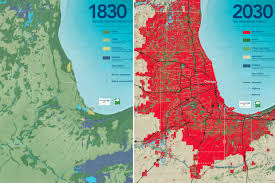
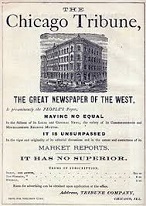
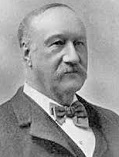
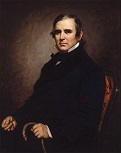
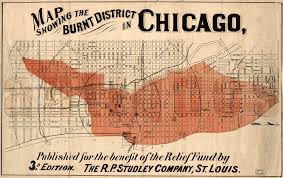

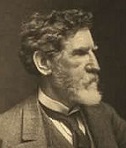


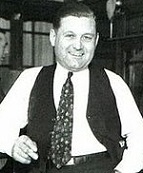
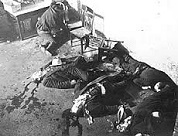

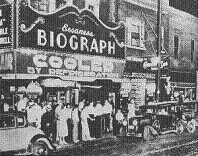














TLW's Chicagoscope™ (Chicago Historyscope) |
By T.L. Winslow (TLW), the Historyscoper™ |
© Copyright by T.L. Winslow. All Rights Reserved. |
Original Pub. Date: June 17, 2017. Last Update: June 7, 2020. |

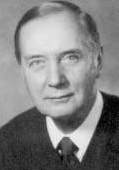




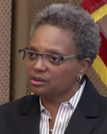



Westerners are not only known as history ignoramuses, but double dumbass history ignoramuses when it comes to Chicago and Chicago history. Since I'm the one-and-only Historyscoper (tm), let me quickly bring you up to speed before you dive into my Master Historyscope.

On Mar. 12, 1779 the city of Chicago, Ill. (Ill. Tribe word for "striped skunk", meaning wild leek) is founded by Jean Baptiste Pointe du Sable (DuSable) (1745-1818), a black fur trapper from Haiti, who sets up a trading post in modern-day Pioneer Court on the NE side of Michigan Ave. Bridge; on Oct. 26, 1968 the state of Ill. recognizes him as the father of Chicago; in 1957 the DuSable Museum of African-Am. History is founded at 57th St. S at Cottage Grove in Chicago.
On Aug. 15, 1812 the Battle (Massacre) of Fort Dearborn in Chicago is a V for the Potawatomi Indians, who burn the fort down and drive off the settlers, who soon return, rebuilding the fort in 1816.

On Feb. 13, 1826 the Am. Temperance Society (Am. Society for the Promotion of Temperance) is founded in Boston, Mass. by Rev. Lyman Beecher (1775-1863) (father of Harriet Beecher Stowe) et al. to outlaw the sale and manufacture of all alcoholic beverages; within five years it has 170K members in 2.2K local chapters; in 1836 it merges with the Am. Society for the Promotion of Temperance (formed in Boston, Mass. in 1826) to form the Am. Temperance Union, which introduces a pledge of "teetotalism" (total abstinence); too bad, anti-slavery reforms and the 1837 Panic weaken the abstinence movement until 1840, when the Washingtonian Movement in Baltimore, Md. begins holding religious-style revival meetings, and spreads across the U.S., leading to the formation of the Sons of Temperance in 1841, which uses fraternal org. techniques, reaching 238K members in 1850; by the late 1830s temperance reformers drop moral persuasion for legal coercion, lobbying for state prohibition laws, leading to prohibition in Maine in 1851, followed by several states, which are repealed or declared unconstitutional by 1857; in 1869 the Prohibition Party is formed in Chicago, Ill., going on to nominate U.S. pres. candidates; in 1874 the Women's Christian Temperance Union is formed in Cleveland, Ohio; in 1895 the Anti-Saloon League is formed by evangelical Protestant men to work for a U.S. constitutional amendment, finally getting it passed in 1919.

On Aug. 12, 1833 the "Windy City" of Chicago, Ill. (modern pop. 3.4M/7M) (Algonquian "place of the wild onion or garlic") on the lower W shore of Lake Michigan near a portage between the Great Lakes and the Mississippi River watershed is incorporated as a town with a pop. of 200, growing to 4K by 1840; the city of Chicago is incorporated on Mar. 4, 1837.


In 1833 William Haas and Conrad Sulzer found the first commercial brewery in Chicago, Ill. (pop. 200), producing 600 barrels of ale their first year; Chicago mayor #1 (1837-8) William Butler Ogden (1805-77) is the initial financial backer, later supplying the land for the John A. Huck brewery (1847); in 1839 after walking from Louisville, Ky., English immigrant William Lill (-1875) buys into it, and after Haas and Sulzer quit he partners with Alsaice-Lorraine immigrant Michael Diversey (-1869), changing the co. name to the Chicago Brewery (AKA Lill and Diversey Brewery Co.), becoming the largest brewery W of the Atlantic seaboard by 1857, producing 45K barrels/year in 1861, with their most popular brand being Lill's Cream Ale;too bad, it burns down in the 1871 Great Chicago Fire.

On June 10, 1847 the Chicago Tribune is founded in Chicago, Ill. by James Kelly (1809-95) et al., billing itself as "the Great Newspaper of the West", and "World's Greatest Newspaper", going on to support the Free Soil and Whig parties against the Dems. and promoting xenophobia against foreigners esp. Roman Catholics, affiliating with the Know Nothing Pary on Feb. 10, 1855, also supporting temperance, becoming the #1 paper in the Chicago metro and Great Lakes region; until ? the masthead displays the U.S. flag along with the motto "An American Paper for Americans".
In 1847 John A. Huck (-1878) and John Schneider found a brewery in Chicago, Ill. two blocks E of Lill's, producing the first lager in Chicago; Huck's house becomes the center of the city's first beer garden, with the elms shading his lagering cellars; in 1855 he changes the co. name to Eagle Brewing Co.; too bad, it burns down in the 1871 Great Chicago Fire; when he dies, his son John founds a new brewing co. that becomes the first in the U.S. to use the Saladin Box malting process, invented by French Lt. Col. Charles Saladin (1878-1942), using rotating screws to move the barley across the air flow to keep it from forming large unusable mats.
On Apr. 3, 1848 the Chicago Board of Trade in Ill. is founded by 83 merchants at 101 S. Water St.
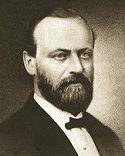
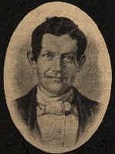
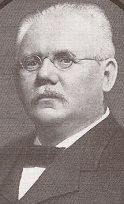
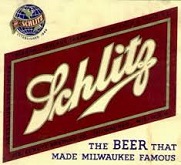
In 1849 the Joseph Schlitz Brewing Co. is founded in Kilbourntown, Milwaukee, Wisc. by Miltenberg, Bavaria-born Georg August Krug (1815-56), and acquired in 1858 after his death by his Mainz, Germany-born bookkeeper Joseph Schlitz (1831-75), who doubles Chicago sales after the 1871 Great Chicago Fire before being lost at sea in 1875, after which Krug's four nephews starting with Georg Carl August Uihlein (1842-1911) found a dynasty that runs the co. permanently; the logo is a globe girdled by a buckled belt and support by four playful female figures representing the four hemispheres, with gnomes at their feet, the whole structure supported by four beer keg pedestals (3 kegs/pedestal) with a trumpet-blowing herald on top; the ad slogans are "The beer that made Milwaukee famous" and "When you're out of Schlitz, you're out of beer"; in 1886 the co. produces 600K barrels/year, and each employee drinks an avg. of 40 "short glasses" of free beer a day, with the plant champion downing 100 (3 gal.); in 1888 brewery employees in Milwaukee, New York, and Chicago go on strike; in 1889 the Schlitz Hotel is built, followed in 1896 by Palm Garden; in Dec. 1902 the co. passes Pabst, becoming the largest brewery in the U.S. (1M barrels/year); too bad, in the early 1970s it cheapens its formula without telling consumers, pissing them off and ruining their market, causing them to slip to #2 by 1976 behind Anheuser-Busch after recalling 10M bottles, then run an ad campaign for 10 weeks in 1977 by Leo Burnett seemingly ordering the viewers to drink Schlitz or else, which pisses-off customers more; in 1981 a strike closes the Milwaukee plant; in 1982 after slipping to #3 it is acquired by Stroh Brewery Co., which is acquired in 1999 by Pabst Brewing Co; in 2008 the 1960s classic "gusto" formula is reintroduced; in 2014 Pabst Brewing Co. is acquired by TSG Consumer Partners.
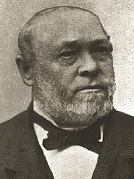
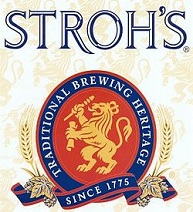
In 1850 after fleeing the 1849 German Rev., Stroh Brewery Co. (Lion's Head Brewery until 1902) is founded in Detroit, Mich. by Kirn, Germany-born Bernhard Stroh Sr. (1822-82) to produce Bohemian-style pilsner in copper kettles; the logo is the heraldic lion of Kyrburg Castle in Germany; in 1893 Stroh Bohemian Beer wins a blue ribbon at the Columbian Exposition in Chicago, Ill.; in 1908 Bernard's brother Julius Stroh takes over, introducing the European fire-brewing method that uses a direct flame instead of steam to heat the kettles, claiming that "the fire-brewed distilling made the beer lighter"; during the Depression they manufacture Stroh's Ice Cream; in 1960 they begin sponsoring Detroit Tigers radio broadcasts; by 1978 production is up to 6.4M barrels, with distribution to 17 states, after which they acquire F&M Schaefer Brewing Co., increasing capacity to 40M barrels, with distribution in 28 states; in 1982 they sponsor the 1982 World's Fair in Knoxville, Tenn. and acquire the Schlitz Brewing Co., but the debt burden hurts it, and after a failed attempt to sell-out to Coors it sells its ice cream operation to Dean Foods Co. in 1988; in 1995 it acquires Helleman Brewing Co., makers of Colt 45 Malt Liquor; too bad, on Feb. 8, 1999 it sells-out to Pabst Brewing Co. and Miller Brewing Co.
In 1854 a cholera epidemic in Chicago, Ill. kills 5% of the pop., causing the city to decide to build a sanitation system, requiring the low-lying areas of the city to be raised up to 14 ft. out of the mud to work, which takes two decades and requires many houses to be relocated.
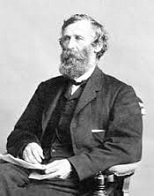

In 1864 the Chicago Lake Tunnel is begun by sanitation engineer Ellis Sylvester Chesbrough (1813-86) to bring clean water into Chicago, Ill. from 60 ft. under Lake Michigan; it opens in 1867.


In 1865 as the U.S. Civil War ends, Texas has nothing but a zillion head of cattle to sell (5M running wild), so frontier scout Jesse Chisholm (1806-68) blazes the Chisholm Trail from San Antonio, Tex. to Abilene, Kan. (ends in the 1880s); meanwhile on Dec. 25 the $1.5M Union Stock Yards in Chicago, Ill., built by Samuel Waters Allerton (1828-1914) and John B. Sherman on railroad money open on a 345-acre tract of reclaimed swamp land SW of the city limits, which later expands to 475 acres, benefitting from the virtual shutdown of the Mississippi Valley by the war, along with meat-packing centers St. Louis, Louisville and Cincinnati, with pens that can hold 10K head of cattle and 100K hogs; meanwhile Chicago doubles its packing capacity in one year, with eight new major plants plus many smaller ones, serving nine railroads; the stock yards peak in 1924 and finally close on July 30, 1971.

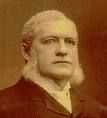
In 1867 Philip Danforth Armour (1833-1901), who became head of Plankinton Packing Co. in Milwaukee, Wisc. (founded 1852) in 1863 and acquired a large interest in the grain business of his brother Herman Ossian Armour (1837-1901) forms Armour & Co. in Chicago, Ill., adding a pork packing plant to it next year; in 1870 they merge, becoming a pioneer in canned meat and refrigeration, causing demand for beef to zoom, with prices reaching $40 a head, making it profitable to herd cattle from long distances incl. Tex., which is first tried in 1866; too bad, they treat their workers like manure, fighting unionization and breaking strikes in 1904 and 1921 after being caught selling tainted beef to the U.S. Army during the 1898 Spanish-Am. War; the Meatpacking Union finally succeeds in unionizing the co. in the late 1930s, joining the CIO; in 1884 Armour dissolves his partnership with Plankinton, and the Milwaukee operation becomes Cudahy Packing Co.
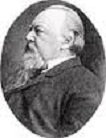
In 1868 Wermelskirchen, Dusseldorf, Germany-born chemist John Ewald Siebel (1845-1919) founds Siebel Inst. of Technology in Chicago, Ill., becoming the oldest beer brewing school in the U.S.
On June 30, 1870 Loyola U. (originally St. Ignatuius College until 1909) is founded in Chicago, Ill. (pop. 300K) by Jesuits Father Arnold Damen; in 1912 it moves to Lake Shore.

On Oct. 8-10, 1871 (Sun.-Tue.) the Great Chicago Fire of 1871 burns 17,450 bldgs., kills 250-300, destroys 3.3 sq. mi. of city territory, and leaves 100K+ homeless; the Chicago Daily Journal (founded 1844) starts the rumor about it being started by Mrs. O'Leary's cow, owned by Catherine "Cate" O'Leary (1827-95), whose barn at 137 DeKoven St. burns down; several breweries burn down, incl. Doyle & Co., Huck, Jerusalem, Lull & Diversey, Metz, Mueller, Sands, and K.G. Schmidt; Schlitz Beer Co. (founded 1849) makes Milwaukee famous when it ships them several kegs of brewsky; U.S. Fire Prevention Week is later set as the week that incl. Oct. 9.
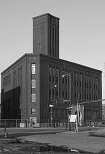
In 1878 the Peter Schoenhofen Brewing Co. is founded in the Pilsen neighborhood of Lower West Side, Chicago, Ill. by brewer Peter Schoenhofen, using a 1.6K-ft. deep artesian well for its water supply, and locating not in the city center but along the new railway lines, causing a boom, after which there are 60 breweries in Chicago by 1900 producing a total of 100M gal./year.

In 1879 after joining the St. Joseph Gazette in 1875, St. Louis, Mo. born Eugene Field Sr. (1850-95) pub. his first poem "Christmas Treasures"; in 1883 after working for the Kansas City Times and Denver Tribune he joins the Chicago Daily News, writing the humor column "Sharps and Flats". He goes on to pub. the poems Little Boy Blue (1888), and Wynken, Blynken, and Nod (original title "Dutch Lullaby") (Mar. 9, 1889); "Wynken, Blynken, and Nod one night/ Sailed off in a wooden shoe - / Sailed on a river of crystal light,/ Into a sea of dew."



On June 3-6, 1884 the 1884 Repub. Nat. Convention in Chicago, Ill. nominates former U.S. secy. of state (1881, 1889-92) James G. Blaine (1830-93) of Maine for pres., and Ill. Sen. (Civil War Union Gen.) John Alexander Logan (1826-86) for vice-pres.; Cleveland's rep. for honesty causes Tammany Hall, the Dem. machine in New York City to oppose him, while liberal Repubs. (Mugwumps, described as "a bird usually to be seen sitting on a fence, with its mug on one side and its wump on the other") desert the corrupt Blaine; meanwhile fun-guy U.S. Civil War Gen. Benjamin Franklin Butler (Mass. gov. since 1882) becomes the candidate of the new populist Anti-Monopoly Party (founded in Chicago, Ill. on May 14), which advocates laws regulating interstate commerce, direct popular vote for U.S. senators, a graduated income tax, repeal of all tariffs, and prohibition of govt. land grants to corporations; before the election the Nat. Greenback-Labor Party unites with it; on June 5 after U.S. Gen. Philip Sheridan succeeds U.S. Civil War hero slash villain Gen. William Tecumseh Sherman as CIC of the U.S. Army, Sherman refuses the Repub. pres. nomination, saying "I will not accept if nominated and will not serve if elected" - I'm too used to having somebody tell me what to do? On July 8-11 the 1884 Dem. Nat. Convention in Chicago, Ill. sees pres. Chester Arthur, who secretly suffers from Bright's disease (kidney disorder) choose not to run again, and obese (but good kidneys) (libertarian?) Stephen Grover Cleveland of N.Y. chosen as their pres. candidate, with Thomas Andrews Hendricks of Ind. for vice-pres.; the nomination is clinched after a speech by U.S. rep. (D-Wisc.) (former Civil War Union gen.) Edward Stuyvesant Bragg (1827-1912), that attacks Manhattan's Tammany Hall machine, with the soundbyte: "They love him, gentlemen, and they respect him, not only for himself, for his character, for his integrity and judgment and iron will, but they love him most of all for the enemies he has made", to which the Tammany boss shouts that he "welcomed the compliment".


On May 1, 1886 U.S. workers organize the first May Day strike; on May 4 the Haymarket Square Riot (Massacre) (Affair) sees a peaceful labor strike for an 8-hour workday by 1.4K ruined by a few anti-reaper radicals who explode a bomb in Haymarket Square in Chicago, Ill, killing seven of 200 policemen, causing a riot and discrediting the labor movement as hysteria sweeps the U.S., causing Pres. Cleveland to become less tolerant of labor strikes; anarchists Samuel Fielden (1847-1922), Michael Schwab (1853-98), and Oscar William Neebe (1850-1916) are convicted, but later Ill. Dem. gov. (1893-7) John Peter Altgeld (1847-1902) pardons them, causing er, a firestorm of controversy.
On Mar. 21, 1887 the U.S. Brewmasters Assoc. (USBA) is founded in Chicago, Ill, "to make the interests of the brewing industry its own"; the business language is German; in 1888 it has 229 members, and in 1898 352 members; in 1912 it becomes the Master Brewers' Assoc. of the United States, and in 1933 the Master Brewers Assoc. of Am. (MBAA); in 1948 it creates the MBAA Research Foundation, and after a meeting on Jan. 13, 1950 with the Small Brewers Assoc., it is scrapped, and on Jan. 9, 1952 the Brewing Industries Research Inst. is founded, with charter members incl. the Am. Society of Brewing Chemists (founded Oct. 12, 1934) and the Barley and Malt Inst., later the Dominion Brewers Assoc. of Canada; it is dissolved on Jan. 31, 1969.


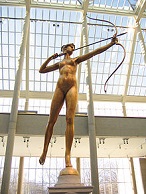
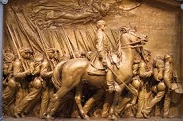

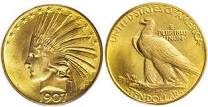
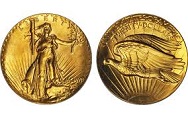
In 1887 Dublin, Ireland-born Am. sculptor Augustus Saint-Gaudens (1848-1907) sculpts a 12-ft. (3.7m) bronze statue of Abraham Lincoln: The Man (Standing Lincoln) for Lincoln Park in Chicago, Ill.; 10K attend the unveiling incl. Lincoln's grandson Abraham Lincoln II, with the New York Evening Post calling it "the most important achievement American sculpture has yet produced"; Stanford White designs a semicircular platform (exedra) for it. In 1892-3 he sculpts Diana (of the Tower), which ends up on top of the Madison Square Garden in 1893-1925, followed in 1932 by the Philadelphia Museum of Art. On May 31, 1897 he unveils the bronze relief Robert Gould Shaw Memorial (begun 1884) at 24 Beacon St. in Boston Common in Mass., depicting Union Col. Robert Gould Shaw (1837-63) leading the 54th Regiment Mass. Volunteer Infantry (first all-black regiment in New England) down Beacon St. on May 28, 1863 before being KIA in Morris Island, S.C. on July 18, 1863. In 1907 the U.S. Mint discontinues the Coronet design (begun 1838 for the eagle and 1949 for the double eagle) and begins issuing $10 Indian Head Eagle coins and $20 Standing Liberty Double Eagle coins (until 1933), all designed by Dublin, Ireland-born Am. sculptor Augustus Saint-Gaudens (1848-1907), who works from a studio in Cornish, N.H.; Pres. Roosevelt forbids the motto "In God We Trust", considering it in bad taste; Pres. Taft restores it in 1908.
In 1888 brewery employees strike in New York City, Chicago, Ill., and Milwaukee, Wisc.
On May 1, 1889 after the London Syndicate proposes a merger of Schlitz, Pabst, and Blatz in Milwaukee, and Schlitz and Pabst decline the offer, Valentin Blatz Brewing Co. sells part of its business to the English conglomerate Milwaukee and Chicago Breweries Ltd. (originally United States Brewing Co.) for $2.5M, which in June merges with Chicago cos. M. Brand Brewing Co., Bartholomae & Leicht Brewing Co., Bartholomae & Roesing Brewing and Malting Co., Ernst Brothers Brewing Co., and K.G. Schmidt Brewing Co. (makers of Budweiser brand), utilizing the established Blatz distribution network; also in 1889 Franz Falk Brewing Co. and Jung & Borchert Brewing Co. in Milwaukee merge to form Falk, Jung & Borchert Brewing Co, which is acquired in 1893 by Pabst; also in 1889 18 breweries in St. Louis, Mo. merge into the English syndicate St. Louis Brewing Assoc., and in 1890 six breweries in New Orleans, La. merge into the New Orleans Brewing Co.; by 1891 24 English syndicates acquire 80 U.S. breweries and two malt houses; in 1892 the English syndicates start price wars, dropping Chicago beer prices from $6/barrel to $3.50/barrel in 1899 21 breweries merge to form the Pittsburgh Brewing Co. in Penn.; in 1901 10 breweries in Boston, Mass. merge to form the Mass. Breweries Co. Ltd., and 16 breweries in Baltimore, Md. merge to form the Gottlieb-Bauernschmidt-Straus Brewing Co.; in 1905 15 breweries in Pittsburgh, Penn. merge to form the Independent Brewing Co.; meanwhile in 1893 the Prohibitionists form the Anti-Saloon League.
In the 1890s the City Beautiful Movement is launched in Chicago, Ill., spreading to Cleveland, Ohio, Detroit, Mich., and Washington, D.C., going on to be called an "architectural design cult" by Jane Jacobs.
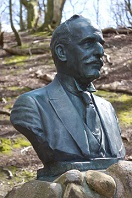
In 1891 the Am. Brewing Academy (later the Wahl-Henius Inst. of Fermentology) is founded in Chicago, Ill. by Aahlborg, Denmark-born biochemist Max Henius (1859-1935) and Robert Wahl (1858-1937), becoming a top school for brewmasters until 1921.



In 1892 the 22-story 302-ft.-high Masonic Temple Bldg. in Chicago, Ill. (begun in 1891) (demolished in 1939), designed by Daniel Hudson Burnham (1846-1912) and his partner John Wellborn Root (1850-91) is completed, becoming the first major skeleton skyscraper, and world's tallest bldg. - Masons do it in the sky?




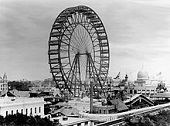



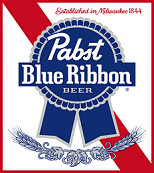
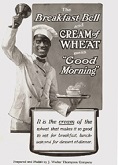
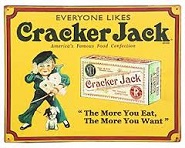
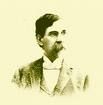
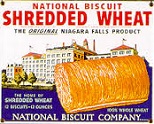




Food is Love, or the Devil in the White City? The 20th Century begins ahead of schedule in the greatest World's Fair of All Time? On May 1, 1893 Pres. Cleveland presses a golden telegraph key in front of a crowd of 300K (largest so far in U.S. history) to start the giant Westinghouse electrical generators lighting 120K lightbulbs and open the $27M World's Columbian Expedition (Chicago World's Fair) (closes Nov. 1) in the "White City" of 150 neoclassic bldgs. in Jackson Park, 686 acres of reclaimed swamp along the shore of Lake Michigan 7 mi. S of downtown Chicago (built of plaster-cement-fiber staff on flammable wooden-steel frames, not marble, and painted using newfangled spray-painting equipment), designed by Daniel Hudson Burnham (1846-1912) and John Wellborn Root (1850-91) (who dies trying to meet the crushing time constraints); on May 12 the South Side Elevated Railroad reaches Jackson Park to provide service to the fair, becoming the first "el", based on the nickname "alley L"; Frank Lloyd Wright (b. 1867) quits college to work for Burnham, who first sends him to the Beaux Arts in Paris, and he comes back saying that the Columbian Exposition set U.S. architecture back 50 years; Francis Bellamy's new "Pledge of Allegiance" is recited by children at the fair's dedication; the Exposition orchestra, conducted by Theodore Thomas (1835-1905) features violinist Maud Powell (1867-1920), who proves that woman can work in them newfangled orchestra thingies; the Court of Honor features the magnificent Peristyle by Charles Atwood, Daniel French's 65-ft.-tall statue The Republic, as well as colossal heads of artists Michelangelo et al. by French-born Beaux Arts popularizer Olin Levi Warner (1844-96) in the Palace of Fine Arts, which houses 10K pieces of art so crowded together that nobody can view them all; the 1687 ft. x 787 ft. x 245 ft. tall (500K sq. ft.) (44 acre) Manufacturers and Liberal Arts Bldg. (opened in Oct. 1892 in front of a crowd of 100K), the largest bldg. in the world, has a crowd cap. of 300K and is lit with 10K electric lights, and the endless exhibits are worth at least $50M; the U.S. Liberty Bell is displayed in the Penn. exhibit in a replica of Independence Hall; the Japanese Village is the first exposure of Americans to cool Japanese culture, and is the only non-white exhibition not snickered at; the Cold Storage Bldg. features an indoor skating rink, and burns down on July 10 with the loss of 13 firemen and four workers, who climb to the top of the metal tower then burn alive or jump while the crowds watch; the polychrome pro-Modern Transportation Bldg. is designed by Louis Henri Sullivan; the Women's Bldg., designed by 21-y.-o. Am. architect Sophia Hayden (1868-1953) (first female in the U.S. with an architecture degree) features exclusively work by women (too bad, welcome to reality, Hayden is only paid $1K for her design, 10% of what men earn); the first-ever (264 ft., 1.2K ton) Ferris Wheel, built by George Washington Gale Ferris Jr. (1859-96) (36 salon cars, each holding 40-60 passengers, with five glass panels) is the highlight and the financial salvation of the fair, and is set up at the 1904 St. Louis World's Fair then scrapped; an all-electric kitchen is featured; the Captive Balloon costs $2 for a ride to 1,490 ft. plus a photo, and it crashes in high winds and goes out of biz; the Shedd Aquarium Bldg., the largest indoor aquarium in the world causes an awakening of the environmental movement; the Midway Plaisance of future U.S. congressman (Jewish) Sol Bloom "the Music Man" (1870-1949), designed by Frederick Law Olmsted is the big moneymaker, filled with booze, cigars and bawdy entertainment, incl. the Streets of Cairo ("Beautiful Orient") Bldg., complete with a replica of the Sphinx, featuring Little Egypt (Farida Mazar Spyropoulos) and the "Naughty Girls from Algeria", who dance the Hootchy-Kootchy (Hoochie-Koochie) (Kouta-Kouta), AKA the "danse du ventre" (belly dance) (named by Bloom), with the first perf. of Bloom's uncopyrighted Snake Charmer Tune ("Oh they don't wear pants on the sunny side of France"), which pisses-off Head Prude Anthony Comstock into trying to shut it down, which only makes it more popular and causes the dance to spread around the U.S., complete with a better 1895 version of the song The Streets of Cairo, or The Poor Little Country Maid, by James Thornton (1861-1938), who uses his wife Bonnie to demonstrate it; the U. of Chicago is later built on the site of the Midway Plaisance, and the Chicago Bears football team becomes known as "the monsters of the Midway"; Boilerplate the Mechanical Marvel, a mechanical robot is another don't-miss; the fair introduces the word "cafeteria"; the Rumford Kitchen of home economics founder Ellen Henrietta Swallow Richards (1842-1911) showcases food science, incl. luncheon menus with nutritional info.; chili con carne is introduced; Joseph Garis Cochrane displays her new automatic dishwater (patented 1886); carmel maker Milton S. Hershey sees chocolate-making machinery at the fair and buys it; Henry Perky's shredded wheat is popularized, along with Wrigley's new Juicy Fruit brand chewing gum; German-born Frederick William "Fritz" Rueckheim and his brother Louis Rueckheim introduce Cracker Jack brand caramel-coated popcorn with peanuts (which is registered in 1896, comes in a "wax-sealed" packages in 1899, gets a boost from the 1908 song "Take Me Out to the Ball Game" by Albert Von Tilzer and Jack Norworth, and begins incl. silly trivial toys as prizes starting in 1912, then features Sailor Jack and his dog Bingo in 1918, with the motto "The more you eat the more you want"); they actually don't introduce it until 1896?; Pabst Blue Ribbon Beer, made by Capt. Johann Gottlieb Friedrich "Frederick" Pabst (1836-1904) (since 1882, when he started tying silk ribbons to his Select Beer) wins a blue ribbon, and guess what, 30M ft. of silk blue ribbon shipped with the beer that didn't quite make Milwaukee famous by the turn of the cent.?; Cream of Wheat farina breakfast porridge mix made from wheat semolina makes its debut; Bavarian sausage vendor Anton Ludwig Feuchtwanger starts out providing white gloves to eat them with, then switches to rolls when they keep the gloves as souvenirs; Henry John "H.J." Heinz (1844-1919) attracts people to his 2nd-floor out-of-the way booth by handing out Heinz pickle pins, going on to give away 100M of them during the next cent.; R.T. Davis Mill Co. hires Ky.-born former slave Nancy Green (1834-1923) to demonstrate Aunt Jemima pancake mix in front of their 24-ft.-high 12-ft.-diam. world's largest flour barrel, causing co. sales to go through the roof; writer L. Frank Baum later models his Emerald City after the White City; "Devil in the White City" serial killer Dr. Henry Howard Holmes (Herman Webster Mudgett) (1861-96) ("the Torture Doctor") sobers it up with some World's Fair murders after he builds a 105-room hotel nearby filled with torture chambers, and lures 27+ young women to their deaths, torturing and gassing them in a soundproof room, then butchering their bodies in the basement and selling the parts to medical schools; the fair closes on Nov. 1 after hosting 27M visitors from 73 nations, and makes a small profit; on the night of Oct. 28 disgruntled insane newspaper distributor Patrick Eugene Joseph Prendergast (1868-94) (who thought that he was owed a govt. job for supporting his election campaign) murders Chicago mayor Carter Henry Harrison Sr. (b. 1825) in his home with a small revolver, causing many to skip the closing ceremonies for his Nov. 1 funeral; Prendergast is hanged next July 13 after his atty. Clarence Darrow unsuccessfully raises the insanity defense - he didn't get the job, did he?
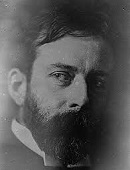
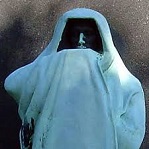


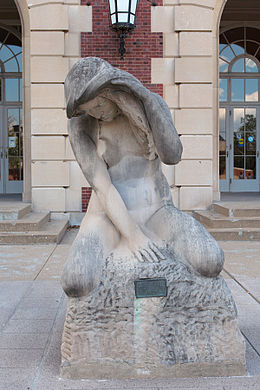
In 1903 Elmwood, Ill.-born sculptor Lorado Zadok Taft (1860-1936) pub. The History of American Sculpture, first-ever; the 1925 rev. version becomes a std. reference until Wayne Craven's "Sculpture in America" (1968); he follows with Modern Tendencies in Sculpture (1921). In 1909 he sculpts Eternal Silence (Statue of Death) (Dexter Graves Monument) (Graceland Cemetery, Chicago, Ill.) (Dexter Graves (-1844), who led a group of 13 settlers from Ohio in 1831 to Chicago), followed by Fountain of Time (1920-22) (Midway Plaisance, Chicago, Ill.), followed by The Recording Angel (1923), Fountain of Creation (unfinished) (1923) (U. of Ill. Library) (planned to complement "Fountain of Time"), Lincoln the Lawyer (1929), and The Patriots (1932) (La. State Capitol, Baton Rouge).

In 1904 Gatesburg, Ill.-born Swedish-Am. poet (school dropout) Carl August Sandburg (1878-1967) pub. his debut poety book In Reckless Ecstasy. In 1912 he moves from Milwaukee, Wisc. to Chicago, Ill., hooking up with Socialist mayor Harriet Monroe, founder of the mag. Poetry. In Mar. 1914 he pub. Chicago in Poetry, the first of nine Chicago Poems; "Hog Butcher for the World,/ Tool Maker, Stacker of Wheat,/ Player with Railroads and the Nation's Freight Handler;/ Stormy, husky, brawling,/ City of the Big Shoulders;" In 1916 he pub. Chicago Poems. In 1918 he pub. Cornhuskers (Pulitzer Prize) (shares it with Margaret Widdemer). In 1920 he pub. Smoke and Steel. In 1922 he pub. Slabs of the Sunburnt West; "I am Chicago, I am a name given out by the breaths of/ working men, laughing men, a child, a belonging." In 1928 he pub. Good Morning, America. In 1936 he pub. The People, Yes. In 1950 he pub. Complete Poems (Pulitzer Prize). Sandburg dies on July 22, 1967 in Flat Rock, N.C., after which Pres. LBJ utters the soundbyte: "Carl Sandburg was more than the voice of America, more than the poet of its strength and genius. He was America."

In 1909 Am. architect Daniel Hudson Burnham (1846-1912) launches the 1909 (Burnham) Plan of Chicago, which reshapes Chicago's central area, influencing the new field of city planning.
On July 27, 1919 increase of the black pop. from 44K in 1910 to more than 100K triggers the huge Chicago Race Riots in "Shy Town" Chicago, Ill. which last all summer; Pres. Wilson calls the white race the "aggressor", but calls out federal troops to put down the riots on July 30 - after all, whites are still the crackers?

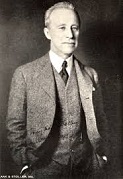
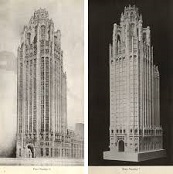
In 1923 Am. architects Raymond Mathewson Hood (1881-1934) and John Mead Howells (1868-1959) win a $50K contest to design the 462 ft. 36-floor Gothic Chicago Tribune Bldg. (Tribune Tower) at 435 North Michigan Ave. in Chicago, Ill. (finished in 1925).
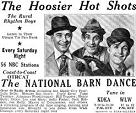

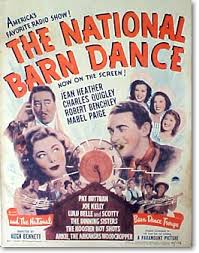

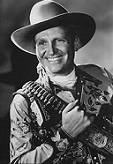











On Apr. 19, 1924 National Barn Dance debuts on WLS-AM in Chicago, Ill. (owned by Sears, Roebuck & Co., hence the initials WLS = World's Largest Store), founded by Edgar L. Bill, reaching an audience of 20M in the 1930s-1940s, featuring Orvon Grover "Gene" Autry (1907-98), Clyde Julian "Red" Foley (1910-68), Judy Martin (Eva Alaine Overstake) (1917-51) (2nd wife of Red Foley) (grandmother of Debby Boone), Jenny Lou Carson (Virginia Lucille Overstake) (1915-78) (first woman to compose a #1 country hit in 1945, known for her Annie Oakley act), and Evelyn Carson AKA the Three Little Maids (Overstake Sisters), Eddie Dean (Edgar Dean Glosup) (1907-99) and his brother Jimmie Dean (not to be confused with Jimmy Dean), Lulu Belle and Scotty ("the Sweethearts of Country Music") incl. Myrtle Eleanor Cooper (1913-99) and Scott Greene Wiseman (1908-81), Maxwell Emmett "Pat" Buttram (1915-94), George Leslie Gobel (1919-91), the Williams Brothers incl. Bob Williams, Don Williams, Dick Williams, and Andy Williams, the DeZurik Sisters Mary Jane DeZurik (1917-81) and Carolyn DeZurik (1918-2006), the Hoosier Hot Shots, Lester Alvin "Smiley" Burnett (1911-67), Edwin Ellsworth "Eddie" Peabody (1902-70) ("King of the Banjo"), and Joe Kelly; NBC-Radio picks it up in 1933-46, followed by ABC-Radio in 1946-52; live performances cease in 1957, and it is discontinued in 1959.
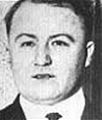
On Nov. 10, 1924 Chicago bootlegger Charles Dean "Dion" O'Banion (b. 1892) (leader of the North Side Gang and rival of Al Capone and Johnny Torio), known for his florist business, boyish face, and trigger-happy ways, who lavishes flowers on funerals and starts a fashion is gunned down by Frankie Yale, John Scalise, and Albert Anselmi, his well-flowered funeral attended by 15K; his death starts a 5-year gang war between the North Side Gang and the Chicago Outfit that ends in the St. Valentine's Day Massacre of 1929.


In 1925 Al Capone (1899-1947) takes over the criminal org. of Johnny "the Brain" Torrio (1882-1957) in Chicago, Ill.; 400 gang murders are recorded in the city this year.
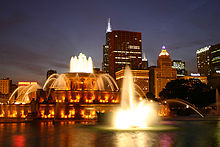
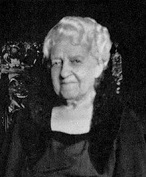
On Aug. 26, 1927 the $750K rococo wedding cake style Buckingham Fountain in Grant Park in Chicago., Ill. is dedicated, donated by grain elevator heir and philanthropist Kate Sturges Buckingham (1858-1937) in honor of her brother Clarence, inspired by the Latona Fountain in the Palace of Versailles, becoming one of the world's largest fountains, featuring Apr.-Oct. water shows during the days and color-light shows in the eves.


Say I Love You with bullets? On Feb. 14, 1929 the St. Valentine's Day Massacre takes place in the S.M.C. Carthage Co. warehouse on North Clark St. (at Dickens) in Lincoln Park, Chicago, Ill., when seven O'Banions, members of the North Side Gang of George "Bugs" Moran (Adelard Cunin) (1893-1957), incl. Frank and Pete Gusenberg, Adam Heyer, Al Weinshunk, James Clark, John May, and Reinhardt Schwimmer are murdered by four men working for rival Al Capone,, two of them wearing police uniforms, using two Tommy guns and two shotguns; Bugs Moran arrives five min. later after beiing detained for his appointment, and survives, but Capone is now in control of Chicago organized crime - gateman sees name, garageman sees name tag?
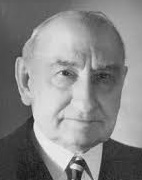
On Apr. 30, 1930 the term "public enemy" is coined by Chicago Crime Commission chmn. Frank Joseph Loesch (1852-1944).
In Nov. 1930 amid unemployment of 75K, Chicago mob boss Al Capone sets up his first soup kitchen at 935 South State St., serving three hot meals a day to 2.2K unemployed each day, with a sign on the door reading "Free soup coffee & doughnuts for the unemployed", becoming one of the first in the U.S.; on Thanksgiving he feeds 5K, switching from turkey to beef stew after news of a local heist of 1K turkeys.


On Jan. 9, 1931 Mervyn LeRoy's Little Caesar (Warner Bros.) debuts, based on the 1929 W.R. Burnett novel, becoming the grandfather of the modern gangster film, becoming the breakthrough role for Romanian-born Edward Goldenberg Robinson (Emanuel Goldenberg) (1893-1973) as small-time Chicago gangster Caesar Enrico "Rico" Bandello, who utters the immortal soundbyte "Mother of mercy, is this the end of Rico?"; first film by Chicago, Ill.-born Warner Bros. production head Harold Brent "Hal" Wallis (1898-1986), husband (since 1927) of actress Louise Fazenda, followed in 1966-86 by Martha Hyer, who quits in 1944 after clashing with Jack Warner over "Casablanca", going independent and hiring Ayn Rand, Lillian Hellman et al. as screenwriters, scoring hits with Dean Martin-Jerry Lewis comedies and Elvis Presley movies, along with True Grit (1969) and Rooster Cogburn (1975).
In 1931 the (Mafia) Commission is founded to replace the Boss of All Bosses (Capi di Tutti Capi) by the Five Families of New York City (Bonanno, Colombo, Gambino, Genovese, Lucchese), the boss of the Chicago Outfit, and the boss of the Buffalo Family; it holds its last meeting in Nov. 1985.
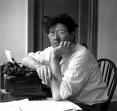
In 1932 Chicago, Ill.-born James Thomas Farrell (Gael. "hero") (1904-79) pub. his first novel Young Lonigan: A Boyhood in Chicago Streets, #1 in the Studs Lonigan series, which later inspires Norman Mailer to become a writer. In 1933 he pub. Gas-House McGinty. In 1934 he pub. Calico Shoes; also The Young Manhood of Studs Lonigan. In 1936 he pub. A World I Never Made. In 1937 he pub. Can All This Grandeur Perish? and Other Stories. In 1938 he pub. No Star is Lost. In 1939 he pub. Tommy Gallagher's Crusade. In 1940 he pub. Father and Son. In 1941 he pub. Decision; also Ellen Rogers. In 1942 he pub. My Days of Anger. In 1946 he pub. Bernard Clare. In 1949 he pub. The Road Between. In 1950 he pub. An American Dream Girl; also The Name is Fogarty: Private Papers on Public Matters. In 1951 he pub. This Man and This Woman. In 1952 he pub. Yet Other Waters. In 1953 he pub. The Face of Time.


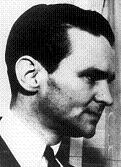


On July 22, 1934 (eve.) (his birthday) after being named the first Public Enemy No. 1, and despite a painful but ineffective plastic surgery, John Dillinger (b. 1903) is killed (assassinated?) by 19 FBI agents led by Chicago FBI office head (since 1932), Timmonsville, S.C.-born Melvin Horace "Little Mel" Purvis II (1903-60) and a bunch of local cops outside the Biograph Theater in Chicago, Ill. after being betrayed by the "Woman in Red" Anna Sage (Cumpanas) (1892-1947) (actually wearing an orange skirt) (a Romanian madame facing deportation on a morals charge, who is deported anyway); fans dip handkerchiefs in his blood at the death scene; he is buried under 5 ft. of cement and steel to deter souvenir seekers in Crown Point, Ind., in the same cemetery as Pres. Benjamin Harrison; he had just seen the 1934 movie Manhattan Melodrama, starring William Powell, Clark Gable, and Myrna Loy; future Conn. Dem. Sen. (1959-71) Thomas Joseph Dodd (1907-71) participates in the trap as an FBI special agent; the publicity makes Purvis a celeb, making J. Edgar Hoover jealous?; Purvis resigns from the FBI in 1935.
On Oct. 12, 1934 the Am. Society of Brewing Chemists (ASBC) is founded at the Wahl-Henius Inst. in Chicago, Ill. to foster scientific papers, with 24 member cos. incl. brewing cos. Anheuser-Busch, Pabst, Schaefer, and Blitz, malting cos. Fleishmann and Kurth, corn processors Am. Maize and Krause Milling, and scientific orgs. Siebel Inst., Nat. Brewers' Academy, and Wallerstein; in 1939 individual membership is approved.

In 1935 Detroit, Mich.-born Nelson Algren (1909-81) pub. his first novel Somebody in Boots. In 1942 he pub. Never Come Morning, about a doomed young criminal, which pisses-off the Polish community in Chicago, causing it to be banned by the Chicago Public Library; after he dies they stop Chicago from renaming West Evergreen St. (where he lived at #1958) after him, although they let them name a fountain in the Polish Triangle after him. In 1949 he pub. The Man With the Golden Arm, about junkie musician Frankie Machine; filmed in 1955 starring Frank Sinatra. In 1951 he pub. Chicago, City on the Make, which shows the seamy side of Polish Chicago, pissing-off the powers that be; "For the masses who do the city's labor and also keep the city's heart"; the Chicago Tribune calls it a "highly scented object", then after he dies flops and establishes the Nelson Algren Award for Short Fiction. In 1956 he pub. A Walk on the Wild Side; Dove Linkhorn tries to rescue ho Hallie Gerard; incl. "Algren's Three Rules of Life": "Never play cards with a man called Doc. Never eat at a place called Mom's. Never sleep with a woman whose troubles are worse than your own."
In the 1940s the Latin Kings street gang is founded in Chicago, Ill. by Puerto Rican youths, expanding to 39+ states and 206 cities, becoming dominated by Mexicans, who create the religion of Kingism.
In 1942 the Brewers Assoc. of Am. (originally the Small Brewers Committee) is founded at the Palmer House in Chicago, Ill.; in 2005 it merges with the Assoc. of Brewers (founded 1979).
In 1948 the tabloid newspaper Chicago Sun-Times is founded via the merger of the Chicago Sun (founded Dec. 4, 1941 by Marshall Field III) and the Chicago Daily Times (founded 1844 as the Chicago Daily Journal) (known for starting the rumor about Mrs. O'Leary's cow), becoming the oldest continuously published daily newspaper in Chicago; in 1943 the advice column "Ask Ann Landers" by Ruth Crowley debuts, being taken over in 1955 by Eppie Lederer, sister of "Dear Abby" columnist Abigail van Buren; in 1959 the Field family acquires the afternoon Chicago Daily News, which folds in 1978, causing Pulitzer Prize-winning columnist Mike Royko to move over.

On Apr. 20, 1955 Irish-Am. Dem. Richard Joseph Daley (1902-76), becomes mayor #38 of Chicago, Ill. (until Dec. 20, 1976), becoming "the last of the big city bosses", going on to support JFK in 1960 and Hubert Humphrey in 1968, while getting in a little spat with Ribicoff at the 1968 Dem. Nat. Convention; the 3rd mayor in a row from the Irish Roman Catholic Bridgeport neighborhood in Chicago's South Side.
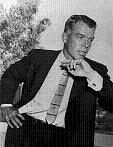
On Sept. 20, 1957 (Fri.) the crime drama series M Squad debuts on NBC-TV for 117 episodes (until June 28, 1960), set in Chicago, Ill., starring Lee Marvin (1924-87) as Det. Lt. Frank Ballinger, who fights organized crime and corruption in his 1957 Ford Fairlaine when not hawking Pall Mall cigarettes, GE, Bulova, and Hazel Bishop, making him a star; Nelson Case is the announcer; Paul Newlan is his boss; the M Squad Theme is by Count Basie; the short-lived 1982 TV series Police Squad! later spoofs it; too bad, an episode showing a police officer in a bad light pisses-off Chicago mayor Richard J. Daley, who virtually bans TV and movie location filming until the late 1970s.
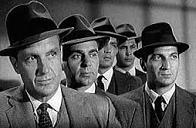
On Apr. 20, 1959 (Mon.) Desilu's B&W crime drama The Untouchables debuts on ABC-TV for 118 episodes (until May 21, 1963), based on the bestelling 1957 memoir of Elliot Ness and Oscar Fraley, starring Robert (Charles Langford Midini) Stack (1919-2003) as Chicago Prohibition U.S. Treasury agent Eliot Ness (1903-57), with Walter Winchell as narrator, about a special federal govt. elite squad formed after the 1929 St. Valentine's Day Massacre; both J. Edgar Hoover and Frank Sinatra object to it for different reasons, Sinatra because it defames Italian-Ams, Hoover because it confuses Treasury cases with FBI cases.
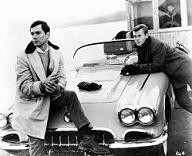
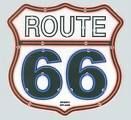
On Oct. 7, 1960 (Fri.) Stirling Silliphant's and Herbert Breiter Leonard's drama Route 66 debuts on CBS-TV for 116 episodes (until Mar. 20, 1964), starring Martin Sam Milner (1931-2015) as recent college grad Tod Stiles, who decides to travel U.S. Route 66 from Chicago, Ill. to Santa Monica, Calif. in his Chevy Corvette with friend Buz Murdock, played by George Maharis (1928-),who is replaced in season 3 by Vietnam vet Lincoln "Linc" Case, played by Glenn Corbett (1933-93); filming ends up covering 25 states plus Toronto, Canada, vs. only eight states on the real Route 66; the ultra-cool Route 66 Theme is by Nelson Riddle.


On July 10, 1962 (night) the $3M 170 lb. Bell Labs Telstar I, the world's first privately-funded commercial communication satellite is launched from Cape Canaveral, Fla., carrying 12 voice circuits with a combined throughput of 768K bps; on July 23 (2:58 p.m.) the first transatlantic TV broadcast, relayed from Andover, Maine to Goonhilly, Cornwall and Pleumeur-Boudou, France is seen by millions, starting with a split screen of the Statue of Liberty and Eiffel Tower, followed by Walter Cronkite saying "Good evening Europe. This is the North American continent live via AT&T Telstar, July 23, 1962"; although the first images were supposed to be of JFK in a trans-Atlantic press conference in Washington, D.C. on nuclear testing and the devaluation of the dollar, he isn't ready on time so a ML ballgame between the Philadelphia Phillies and Chicago Cubs at Wrigley Field actually shows Ernie Banks first, with BBC broadcaster ichard Dimbleby uttering the soundbyte: "There is a face - it's a man's face!" (and yes, it's black), becoming the first expore to baseball for many Europeans; after Philly's Tony Taylor flies-out and Johnny Callison hits a single to right field at the top of the 3rd inning, the signal is switched to JFK's press conference, which is already in the Q/A phase; at 6:00 p.m. after live scenes from the U.S.-Mexico border at Juarez, Niagara Falls, the World's Fair in Seattle, Wash., the U.N. HQ in New York City, a chat with NASA astronauts at Cape Canaveral, Fla., a rehearsal of Shakespeare's "Macbeth" at the Shakespeare Festival in Stratford, Ont., a close-up of Mount Rushmore in S.D. and the singing of "The Battle Hymn of the Republic" by the Mormon Tabernacle Choir, the Euro program opens with live shots of Big Ben in London and a welcome from Brussels, Belgium by Richard Dimbleby of BBC-TV; in Nov. Telestar's electronics fail due to radiation, then come back online until Feb. 21, 1963; meanwhile this year the U.K. transmits the first color TV pictures via satellite.

In 1965 the 31-story 648-ft. Chicago Civic Center is completed, built of self-weathering Cor-Ten steel, featuring a 50-ft. Untitled Sculpture by Pablo Picasso (an abstract animal of some kind?), unveiled on Aug. 15, 1967, becoming the tallest bldg. in Chicago until 1969 (John Hancock Center), and the tallest flat-roofed bldg. with less than 40 stories on Earth (until ?); on Dec. 27, 1976 it is renamed the Richard J. Daley Center.
On June 12-14, 1966 the Division Street Riots in the Humboldt Park area of Chicago, Ill begin after a downtown parade to honor St. John the Baptist (namesake of San Juan, Puerto Rico) when a white police officer wounds a young Puerto Rican man, becoming the first Puerto Rican riot in the U.S., with 16 wounded; the parade is renamed the Puerto Rican Parade.


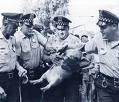
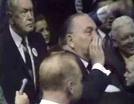









On Aug. 22-30, 1968 the 1968 Dem. Nat. Convention in Chicago, Ill. is the scene of mass protests by militant yippies and hippies, which are ruthlessly quashed by police, Nat. Guardsmen, and federal troops with tear gas and clubs, incl. the Festival of Life in Grant and Lincoln Parks, attended by 10K militants protesting the rising death toll in Vietnam by staging rock concerts (by MC5, etc.) in front of marijuana-smoking, nude public-lovemaking, draft-card-burning Baby Boomers, which is crushed on Aug. 25 by 16K Chicago pigs, 4K state pigs, and 4K Nat. Guardsmen armed with tear gas and nightsticks, cracking heads at mayor Richard Daley's orders to prevent them from overnighting; 308 are arrested, and later eight cops are indicted for use of excessive force (all acquitted); NBC-TV journalists Edwin Newman, John Chancellor, Frank McGee, and Sander Vanocur wear technologically advanced backpacks on the convention floor to conduct the first-ever live interviews with delegates, earning the title "Four Horsement of the Apocalypse"; on Aug. 27 CBS-TV journalist Dan Rather (1931-) is punched in the stomach while covering the convention; after convention chmn. (House Majority leader) Carl Bert Albert (1908-2000) fails to gain control of the rowdy delegates, LBJ calls U.S. Dem. Ill. rep. (1959-95) Daniel David "Dan" Rostenkowski (1928-2010) to take over, pissing Albert off and turning him into an enemy for life, starting by passing him over for House whip for Tip O'Neill when he becomes House Speaker a few weeks after the convention, after which Rostenkowski's own party refuses to nominate him for a 3rd term as chm. of the Dem. Caucus; on Aug. 28 Conn. Dem. U.S. Sen. (1963-81) Abraham Alexander Ribicoff (1910-98) gives a speech nominating George McGovern, ad-libbing the soundbyte "If George McGovern were president, we wouldn't have these Gestapo tactics in the streets of Chicago", after which the TV cameras pan in on mayor Richard J. Daley, who allegedly mumbles "Fuck you, you Jew son of a bitch"; Julian Bond gives a well-received Seconding Speech for Eugene McCarthy, which is written by McCarthy's speechwriter Jeremy Larner, launching Bond's nat political career; leaders of the protest incl. Yippie leaders Abbie Hoffman and Jerry Rubin, who get in a fight on Aug. 22 after deciding to run a pig for president, with Hoffman wanting a small and cute pig and Rubin wanting a big and ugly pig (they end up with a 200-lb. porker purchased by Phil Ochs et al. named Pigasus); other leaders incl. Rennard Cordon "Rennie" Davis (1941-), Thomas Emmet "Tom" Hayden (1939-) of Students for a Dem. Society (SDS), Black Panther leader Bobby Seale, and civil rights advocate David "Dave" Dellinger (1915-2004) (head of Mobe). On Aug. 27-29 Gore Vidal (1925-2012) and William Frank (Francis) "Bill" Buckley Jr. (1925-2008) engage in a series of televised debates during the 1968 Dem. Nat. Convention, with Vidal against the Vietnam War and Buckley for it, disagreeing over the actions of the Chicago police against the protesters et al.; on Aug. 28 when discussing the raising of the Viet Cong flag by the protesters, Vidal says that many think the Viet Cong are right, and calls Buckley the "only proto-crypto-Nazi I can think of", and Buckley replies "Now listen, you queer, stop calling me a crypto-Nazi or I will sock you in your goddamn face, and you'll stay plastered." On Aug. 28 while police and demonstrators clash outside, the Gettysburg, er, Dem. Nat. Convention nominates vice-pres. Hubert H. Humphrey for pres., and Maine Sen. Edmund Sixtus "ED" Muskie (1914-96) for vice-pres.; Humphrey becomes the first nominee who doesn't win a majority of votes in the primaries (because of RFK's death); too bad, the spectacle of scruffy not-so-white street protesters and respectable and not so respectable Dems. at each other's throats, combined with Humphrey's unwillingness to repudiate the admin.'s unpopular war policies makes the normally scary Repubs. a shoe-in with the white Silent Majority sitting in front of their TV sets eating their Swanson TV dinners?






You develop your own unique way of moving as a baby? On Sept. 24, 1969 the govt. show Trial of the Chicago Eight begins in Chicago, Ill., with judge Julius Hoffman (1925-) presiding over the case of U.S. v. Dellinger et al.; New York-born Jewish civil rights atty. (ACLU dir. since 1964) William Moses Kunstler (1919-95) defends David Dellinger (1915-2004), Rennard Cordon "Rennie" Davis (1941-), Thomas Emmet "Tom" Hayden (1939-), Abbot Howard "Abbie" Hoffman (1936-89), Robert George "Bobby" Seale (1936-), Jerry Rubin (1938-94), Lee Weiner (1937-) (a univ. lecturer), and John R. Froines (a chem. prof.) against charges of violating the antiriot clause of the U.S. Civil Rights Act (an oxymoron?) during the 1968 Nat. Dem. Convention; the trial begins to demonstrations outside the courthouse, and Seale ends up bound and gagged on Oct. 20 after railing at the judge, receiving a record four years for contempt in Nov. and being signed, sealed and delivered from the case, to make it the Chicago Seven; after a boisterous trial, featuring testimony by protest singer Phil Ochs, who is allowed to recite the lyrics to his song "I Ain't Marching Anymore", then sings it on the courthouse steps for the CBS Evening News, they are found not guilty of conspiracy on Feb. 18, 1970, two are acquitted of all charges, the rest are acquitted of the conspiracy charge, but five are convicted of crossing state lines to incite a riot, receiving five years and $5K fines, after which the convictions are all reversed by the U.S. Appeals Court on Nov. 21, 1972 on the grounds of bias by the judge; meanwhile the eight police officers indicted are acquitted or get the charges dismissed; "Abbie used to call me the catalyst when we were at the Chicago Seven trial; I guess that's what I am" (Jerry Rubin).
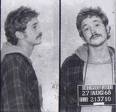

On Oct. 6, 1969 the Weathermen blow up a statue in Chicago, Ill. commemorating the police victims of the May 4, 1886 Haymarket Riot; on Oct. 9-11 the Chicago Days of Rage demonstration over the Chicago Eight Trial, led by Bernardine Dohrn (1942-) and her hubby William Charles "Bill" Ayers (1944-) of the radical Weatherman org. sees the 2.5K Nat. Guardsmen called in to control violence on Oct. 11, resulting in three shot and 300 arrested; the group then goes underground, becoming the Weather Underground, later described by the FBI as a "domestic terorist group"; "Kill all the rich people, break up their cars and apartments, bring the revolution home, kill your parents" (Ayers). On Oct. 7 police and firefighters in Montreal, Canada go on strike for higher pay, causing the govt. to order them back to work on Oct. 8. On Oct. 8 Norodom Sihanouk permits 40K North Vietnamese forces to invade Cambodia and advance into the center of the country - so much for neutrality? '
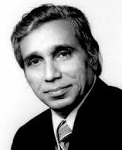

In 1969 the 100-story 1,127-ft. X-braced $100M John Hancock Center at 875 North Michigan Ave. in Chicago, Ill., designed by Bangladesh-born "Einstein of structural engineering" Fazlur Rahman Khan (1929-82) of Skidmore, Owings & Merrill (begun 1965) is completed, becoming the 2nd tallest bldg. on Earth after the Empire State Bldg. (until the Sears Tower in 1973).
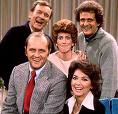
On Sept. 16, 1972 (Sat.) The Bob Newhart Show debuts on CBS-TV for 142 episodes (until Apr. 1, 1978), starring George Robert "Bob" Newhart (1929-) as Chicago psychologist Robert "Bob" Hartley, Suzanne Pleshette (1937-2008) as his wife Emily, Bill Daily (1927-) as their airline navigator neighbor Howard Borden, Marcia Joan Wallace (1942-) as his receptionist Carol Kester Bondurant, and Peter Bonerz (1938-) as orthodontist Jerry Robinson.


On May 3, 1973 the $160M 108-story 1,450-ft.-high (442.1m) 3.6M-sq.-ft. ziggurat-like Sears Tower (1,707 ft. with twin antenna towers) on 333 South Wacker Dr. in Chicago, Ill. (begun 1970), designed by Bangladesh-born "Einstein of structural engineering" Fazlur Rahman Khan (1929-82) is completed, and opens on Sept. 1, surpassing the World Trade Center in New York City by 86 ft. as the tallest bldg. in the world (until ?) and tallest bldg. in North Am. (until 2014); the first bldg. to use Khan's bundled tube structure, which becomes the std.; visitors to the Skydeck can see Ill., Ind., Mich., and Wisc.; designed by Skidmore, Owings, and Merrill it features a black-anodized aluminum curtain wall where up to 14K office workers can hunker down if they can stand the traffic; in 1995 Sears moves its co. HQ to the Chicago suburb of Hoffman Estates.

On Dec. 20, 1976 Chicago mayor Richard J. Daley dies, and Chicago, Ill.-born Michael Anthony Bilandic (1923-2002) becomes Dem. Chicago mayor #39 (until Apr. 16, 1979), winning election in his own right next June 7, going on to oversee the creation of ChicagoFest on Navy Piere, and participate in the first Chicago Marathon in 1977; too bad, a blizzard in Jan. 1979 that drops 35" of snow in two days shuts down the city, and his lame attempts at dealing with it incl. ordering Chicago L trains to bypass stops in African-Am. neighborhoods in South Chicago anger voters.
On June 4-5, 1977 the FALN Puerto Rican separatist group explodes a bomb on the 5th floor of the Cook County Bldg. in Chicago, Ill. outside the offices of mayor Michael Bilandic and board of commissioners pres. George Dunne; a few hours later the Humboldt Park Riot in Chicago, Ill. sees police kill two Puerto Rican men, causing Puerto Ricans to riot, and police to kill three, wound 97, and arrest 164 while suffering 56 wounded; in 1978 the Division Street Puerto Rican Day Parade is launched to commemorate it.
In Nov. 1978 fter selling their shop in Dirty Denver, Colo., Jim Nash and Dannie Flesher open Wax Trax! Records on 2449 North Lincoln Ave. in Gangsterland Chicago, Ill., going on to become the center of the New Wave, punk rock, and industrial music scenes there; in mid-2014 after going kaput in 2001, founder Jim Nash's daughter Julia Nash reopens Wax Trax! Records with the release of a 12-in. single from Cocksure.

On Feb. 27, 1979 after being fired as head of consumer affairs in 1977 for accusing him of making a "backroom deal" to increase cab fares 12%, Chicago, Ill.-born Jane Margaret Byrne (1934-) beats Chicago's Dem. political machine and upsets mayor Michael A. Bilandic to win the mayoral primary; on Apr. 3 she defeats Repub. Wallace D. Johnson, and on Apr. 16 is sworn-in as Chicago mayor #40 (until Apr. 29, 1983).
On May 25, 1979 Am. Airlines Flight 191 (DC-10) crashes on takeoff at Chicago's O'Hare Airport when an engine falls off, killing all 258 passengers and 13 crew aboard plus two on the ground, becoming the worst U.S. aircraft accident (until ?); on June 6 the FAA orders all 136 domestic DC-10s grounded for an investigation, and bans 143 foreign-operated DC-10s from landing at U.S. aiports; the investigation lasts until July.
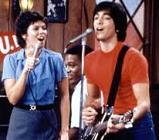
On Mar. 23, 1982 (Tue.) the sitcom Joanie Loves Chachi debuts on ABC-TV for 17 episodes (until May 24, 1983) as a spinoff of "Happy Days', starring Erin Marie Moran (1960-) and Scott Vincent James Baio 91960-) as Joanie Cunningham and Chachi Arcola, who move to Chicago, Ill. and try to start their own rock band during the British (Beatles) Invasion.

On Apr. 12, 1983 Chicago, Ill.-born Dem. Harold Lee Washington (1922-87) is elected Chicago's first African-Am. mayor, and is sworn-in as Chicago mayor #41 on Apr. 29 (until Nov. 25, 1987); Barack Obama becomes his friend and considers him a role model.
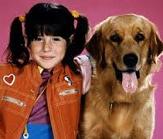
On Sept. 16, 1984 (Sun.) the sitcom Punky Brewster debuts on NBC-TV for 88 episodes (until Mar. 9, 1986), starring Soleil Moon Frye (1976-) as Penelope "Punky" Brewster, who is abandoned by her parents in Chicago along with her dog Brandon, causing her to live in an abandoned apt. managed by Henry Warnimont, played by George Gaynes (Jongejans) (1917-), who takes a shine to her and adopts her.
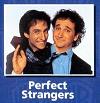
On Mar. 25, 1986 Perfect Strangers debuts on ABC-TV for 150 episodes (until Aug. 6, 1993), starring Mark Linn-Baker (1954-) as straight man Chicagoan Larry Appleton, and Bronson Alcott Pinchot(1959-) as his super-funny distant cousin Balki Bartokomous, a shepherd from the island of Mypos, in a new take on the country bumpkin in the big city theme; his signature Dance of Joy is a cross between a Dosado and a Hokey Pokey; the Perfect Strangers Theme ("Nothing's Gonna Stop Me Now") is performed by David Pomeranz.
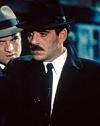
On Sept. 18, 1986 Crime Story debuts on NBC-TV for 44 episodes (until May 10, 1988), starring Chicago, Ill.-born Dennis Farina (1944-2013) as Chicago police detective Lt. Mike Torello fighting organized crime in 1963, led by mob boss Ray Luca, played by Anthony Denison (Anthony John Sarrero) (1949-).
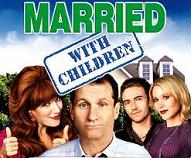
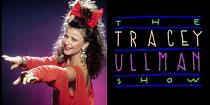
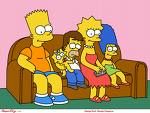
On Apr. 5, 1987 (Sun.) Fox Broadcasting Co. makes its prime-time TV debut by airing the sex-drenched family comedy saga Married... With Children for 262 episodes (until June 9, 1997), created by Michael G. Moye and Ron Leavitt (based on "The Life of Riley" and "The Honeymooners"), about an atypical dysfunctional white Chicago family, starring Edward "Ed" O'Neill (1946-) (who is selected over Sam Kinison and Michael Richards) as poorly hygiened women's shoe salesman daddy Al Bundy (who once scored 4 TDs in a single game for Polk H.S. and won a college scholarship, then became another victim of the Bundy Curse and lost it, ending up working at Gary's Shoes in New Market Mall) ("Hooters hooters, yum yum yum, hooters hooters, on a girl that's dumb"), redhead Stiletto-heel-wearing inbred hillbilly spawn Katey Sagal (1954-) (after Roseanne Barr turns it down) as Margaret "Peggy" Bundy (nee Wanker), Christina Applegate (1971-) as gorgeous-but-dumb-and-promiscuous blonde daughter Kelly "Pumpkin" Bundy, and David Anthony Faustino (1947-) as intelligent unpopular girl-crazy Budrick Franklin "Bud" Bundy (named after Budweiser beer), who all live at 9764 Jeopardy Lane, Chicago, Ill. (phone #555-2878); they are named after wrestler King Kong Bundy, not serial killer Ted Bundy; Amanda Bearse (1958-) as Marcy D'Arcy (Rhoades), David Gene Garrison (1952-) (1987-90), andTheodore Martin "Ted" McGinley (1958-) (1991-7) play their Yuppie neighbors; it then airs The Tracey Ullman Show for 88 episodes (until May 26, 1990), which launches the animated series The Simpsons (which debuts as its own show on Dec. 17, 1989), showing each show 3x each, betting on the lower moral standards than the big three networks have attracting an audience; after suburban Detroit housewife Terry Rakolta organizes a viewer and sponsor boycott, Married With Children becomes a top 20 hit, giving the U.S. its new role model in a totally dysfunctional family that is satisfied with a life not worth living; Homer Simpson makes the word D'oh popular.
On Apr. 7, 1987 Chicago mayor #51 (since Apr. 29, 1984) Harold Washington handily wins a 2nd term, quashing a challenge by archrival Edward Vrdolyak; he serves until his sudden death on Nov. 25, 1987.

On Feb. 28, 1989 in Chicago, Ill., Richard Michael Daley (1942-), son of mayor Richard J. Daley defeats acting mayor Eugene Sawyer in a Dem. primary election, and is sworn-in on Apr. 24 as Chicago mayor #43 (until May 16 2011); in Dec. 2006 he announces that he will seek 6 terms, beating his father's record (1955-76) by Dec. 25, 2010.
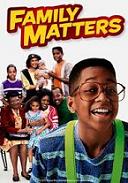
On Sept. 22, 1989 (Fri.) the sitcom Family Matters debuts on ABC-TV for 215 episodes (until July 17, 1998 after switching to CBS in 1997) as a spinoff of "Perfect Strangers", about the middle-class African-Am. Winslow family of Chicago, Ill., making a star of Jaleel Ahmad White (1976-) as Steven "Steve" Urkel.
On July 13-15, 1995 the 1995 Chicago, Ill. Heat Wave kills 103, mainly elderly.

On Oct. 1, 2001 (Mon.) the sitcom According to Jim debuts on ABC-TV for 182 episodes (until June 2, 2009), starring James Adam "Jim" Belushi (1954-) (brother of the late John Belush) as James "Jim" Orenthal, a lovable suburban father of three who likes blues music, the Chicago Bears, Chicago Cubs, Chicago Bulls, and Chicago Blackhawks, and gets into trouble continually because of his laziness.


In Sept. 2005 Brooklyn, N.Y.-born gay billionaire DreamWorks SKG founder David Lawrence Geffen (1943-) begins discussing the purchase of the Los Angeles Times with Leo Wolinsky, making a $2B offer in Nov. 2006, which the parent Tribune Co. rejects, selling instead in Dec. 2007 to Chicago billionaire real estate tycoon Samuel Zell (Shmuel Zielonka) (1941-), who also acquires the Chicago Tribune and Chicago Cubs ML baseball team.
On Sept. 7, 2010 Chicago mayor Richard M. Daley announces that he won't run again; Pres. Obama okays Rahm Emanuel to go for it, and he resigns on Oct. 1.
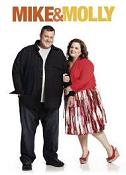
On Sept. 20, 2010 (Mon.) Mark Roberts' sitcom Mike & Molly debuts on CBS-TV for 127 episodes (until May 16, 2016), starring William "Billy" Gardell (1969-) and Melissa Ann McCarthy (1970-) as fat couple Mike Biggs and Molly Flynn, who met in a Chicago Overeaters Anonymous group.

On May 16, 2011 former Obama White House chief of staff #23 (Jan. 20, 2009 to Oct. 1, 2010) Rahm Israel Emanuel (1959-) becomes Dem. mayor #55 of Chicago, Ill. (until May 20, 2019), going on to see his approval ratings tank in late 2015 for protecting cops from justice, esp. the killer of 17-y-o. Laquan McDonald.
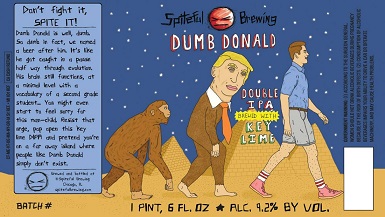
In summer 2016 in honor of the U.S. pres. campaign, Budweiser puts the label "America" in place of "Budweiser" on its beer, causing Donald Trump to take credit; meanwhile Spiteful Brewing Co. of Chicago, Ill. introduces Dumb Donald brand beer, Dock Street Brewing of Philly introduces a series of anti-Trump brands incl. Don't Let Your Friends Vote Drumpf, Short-Fingered Stout, and Drumple IPA, and 5 Rabbit Cerveceria of Chicago renames their leftover beer Chinga Tu Pelo (Sp. "Fuck your hair").
On Aug. 4-5, 2018 a surge of shootings in Chicago, Ill. kills 36 (incl. 16 teenagers), incl. 25 in a 2.5-hour period on Aug. 5, causing former Chicago Heights police chief Gary "Gus" Trower to utter the soundbyte: "Instead of setting up a task force combining the resources of the FBI, DEA, ATF, Chicago Police Department, Illinois State Police and others to fight against the gangs and criminals that all too often cut-short the lives of young blacks, the Democrats are more interested in trying to bring down a duly elected POTUS"; so far this year there has been a total of 1.7K shootings and 318 homicides in Rahm Emanuelville.

On Jan. 29, 2019 (2:00 a.m.) gay biracial "Jamal Lyon in Empire" actor Jussie Smollett (1982-) claims to be attacked in the Streeterville neighborhood of Chicago, Ill. by two white men wearing ski masks who shout racial and homophobic slurs, incl. the soundbyte "This is MAGA country"; after all the usual PC leftist media personalities and politicians incl. Kamala Harris (who tweets that it is "a modern-day lynching") jump to label it a hate crime proving that Pres. Trump's supporters are all violent bigots that he fostered, it turns out that Smollett staged the event to get publicity, causing a backlash against the Never Trumpers that they're the bigots, who jump to judge white males but pretend to reserve judgment as long as possible for black males, women, gays, etc.; on Feb. 20 after the Nigerian-born brothers Abimbola "Abel" Osundairo and Olabinjo "Ola" Osundairo testify before a grand jury, Feb. 20 Smollett is charged with felony disorderly conduct, which carries up to a 3-year prison sentence and a requirement to recompense the police for the cost of their investigation over his false police report.

On May 20, 2019 Massilon, Ohio-born Dem. Lori Elaine Lightfoot (1962-) becomes Chicago, Ill. mayor #56 (until ?), becoming the second woman, first black woman, and first openly gay mayor of Chicago, along with gay and woman mayor of the largest city in U.S. history (until ?).